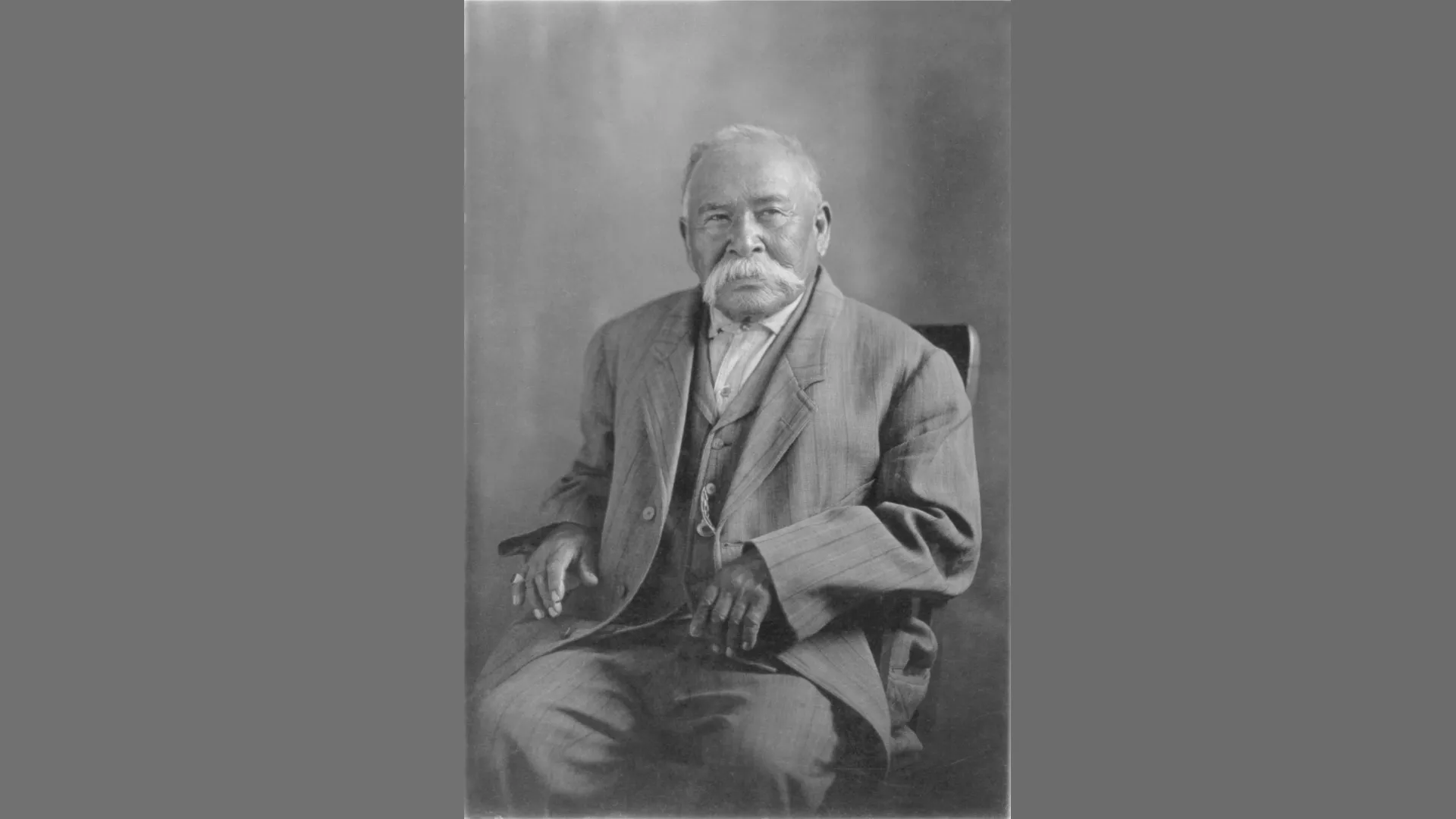Joe Gutierrez | CSUSB Office of Strategic Communication | (951) 236-4522 | joeg@csusb.edu

California State University, San Bernardino announced today that Santos Manuel will receive an In Memoriam (Posthumous) Honorary Doctorate at its spring commencement, scheduled for May 20.
The announcement was made by CSUSB President Tomás D. Morales during the grand opening ceremonies of the Santos Manuel Student Union North, a three-story, 120,000 square-foot, $90 million expansion of the Santos Manuel Student Union complex, which is one of the largest building complexes in the 23-campus California State University System named after an indigenous elder and leader.
“I am pleased to publicly announce that the Board of Trustees of the California State University and CSUSB will be honoring Santos Manuel with an In Memoriam, or posthumous, honorary doctorate in humane letters at our spring commencement exercises,” Morales told the more than 500 in attendance of the grand opening. “I am grateful that we can lift up his name in this way through the highest honor available in the CSU.”
Earlier, Morales had said that that conferring an honorary doctorate upon Santos Manuel in recognition of his profound impact and in honor of his family’s ancestral legacy is especially appropriate to CSUSB.
“As an anchor institution in the region, we would be remiss not to recognize his long-lasting contributions to the tribal communities in Inland Southern California,” Morales said. “We can think of few others who best exemplify our region's, state's and nation’s most distinguished leaders and humanitarians, individuals whose efforts have transcended the ordinary and made a remarkable impact on the lives of generations of people.”
“No one deserves this honor more than my great, great grandfather, Santos Manuel,” said San Manuel Chairman Ken Ramirez. “His wisdom, courage, and vision made it possible for his descendants to have a future, to become a strong tribal government with a forward-looking approach for preparing our community and our people for the challenges that each generation of Yuhaaviatam may face.”
Santos Manuel was the Kiika’, or leader, of the San Manuel Band of Mission Indians (Serrano/ Yuhaaviatam Indigenous peoples). Born in 1814 into the village of his father in the San Bernardino Mountains, he was named Paakuma. He became the Kiika' of the Yuhaaviatam or “People of the Pines,” a respected Serrano spiritual leader, and controlled all the resources within the Yuhaaviatam landscape. Today, Santos Manuel is revered by the San Manuel Band of Mission Indians as a visionary man who arose in their darkest hour through extraordinary leadership, ensuring the survival of their ancestors and tribe.
As a Serrano clan leader, Manuel is recognized for safely leading the tribe from its homeland in the mountains and valleys to escape militia forces that decimated the group during a 32-day battle. During this battle, he counseled his tribe not to fight with the settlers. By the battle’s end, the tribe had dwindled to fewer than 30 members.
After being chased out of the mountains and settling within what is now known as the Inland Empire, Manuel led the band to refuge along the banks of Warm Creek. They resided here for three decades. The leader then established a permanent village in the foothills above present-day Highland, where the tribe has resided since the late 19th century. In 1891, with the passage of the Act for Relief of the Mission Indians, the San Manuel Indian Reservation was established and named in honor of Manuel, who was celebrated for helping to preserve the tribe’s sovereignty, unique culture and heritage. He lived for many years on the reservation, guiding his people and strengthening their position.
Manuel’s life encompassed Spanish missionization, the Mexican-American War, the California Gold Rush and the Civil War, as well as the American settlement of Southern California, the coming of the citrus industry, urban development and World War I. When he died in October 1919 at about 105 years old, he was believed to be the oldest Native American in the San Bernardino Valley.
Today, the San Manuel Band of Serrano Mission Indians is a federally recognized American Indian Tribe located near the city of Highland. The Serrano Indians are the Indigenous people of the San Bernardino highlands, passes, valleys and mountains who share a common language and culture. The San Manuel Reservation is recognized as a sovereign nation with the right of self-government. As an Indigenous community, the origins and history of the San Manuel Band of Mission Indians stem from its relationship with the land and all who share it.
The San Manuel Tribal Council bought additional land surrounding the reservation, which was eventually used for the development of the San Manuel Casino. The tribe built a bingo hall in 1986, and later constructed a casino that is helping to secure a future for the tribe and for its next seven generations. Currently, the San Manuel Band of Mission Indians employs more than 6,000 throughout the tribal government and its enterprises.
CSUSB recognizes Santos Manuel both as a distinguished individual here in the IE along with the exceptional philanthropic acts of his descendants and of the tribe that bears his name. This includes the tribal government’s oversight of many governmental units and focus on building infrastructure, maintaining civil services and promoting social, economic and cultural development; the tribe’s operation of Yaamava' Resort & Casino at San Manuel which is one of the largest employers in the Inland Empire; and the tribe’s support of neighboring communities and Indian Country through financial contributions for education, health and wellness, economic development and cultural projects.
A tribal representative, surrounded by the descendents of Santos Manuel and others of his family ancestral legacy, is expected to accept the award on his behalf at the spring commencement ceremony.